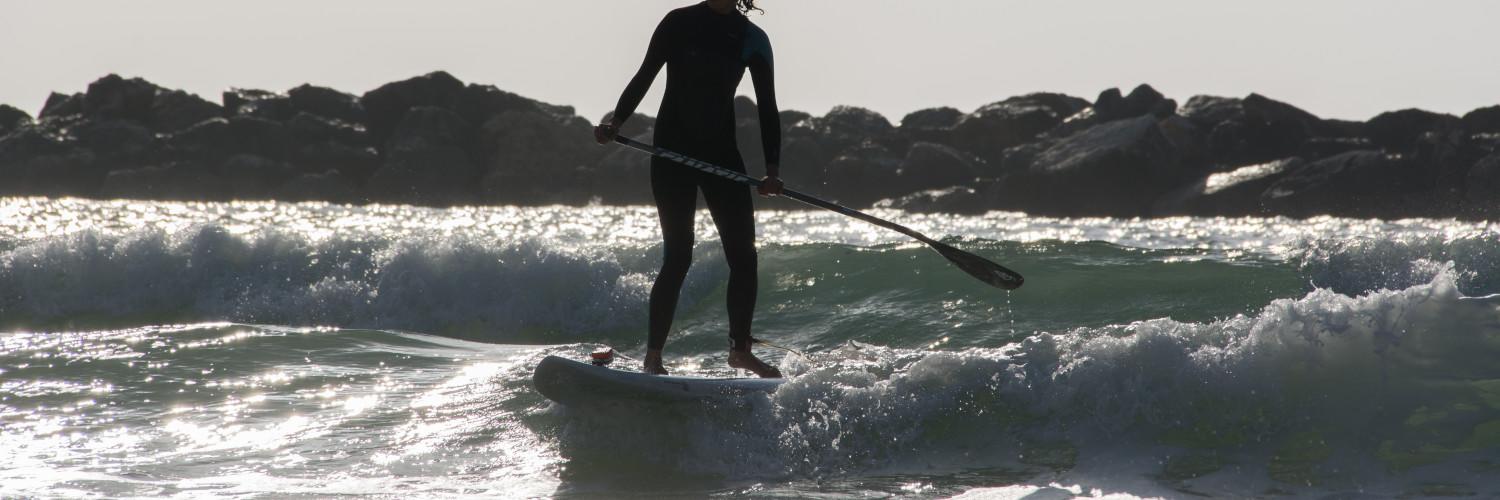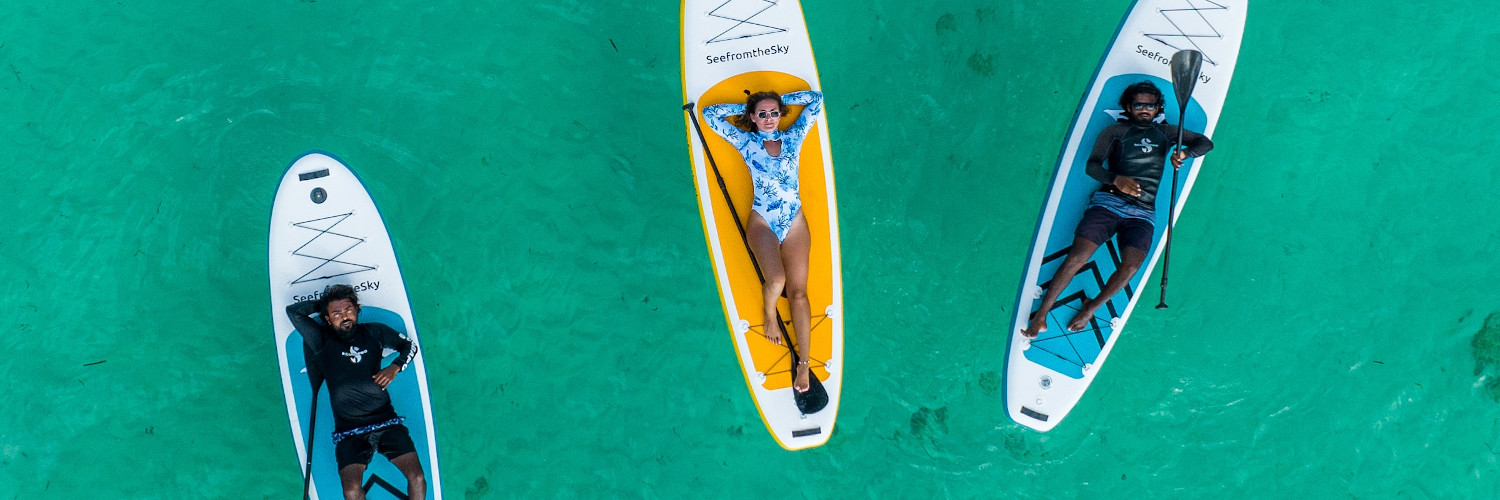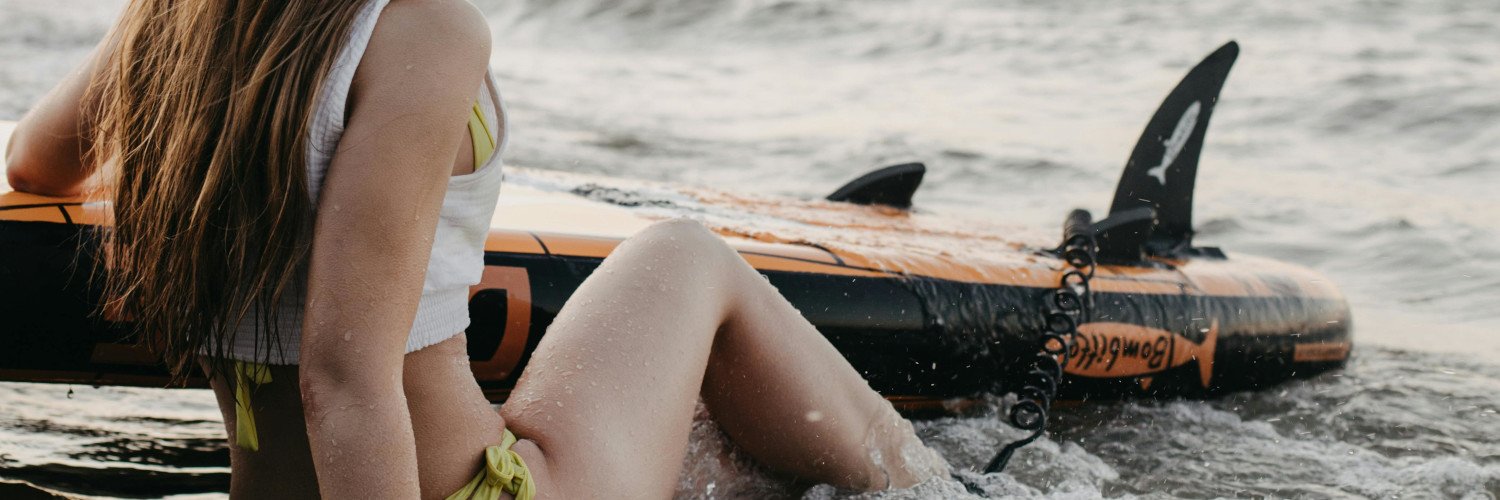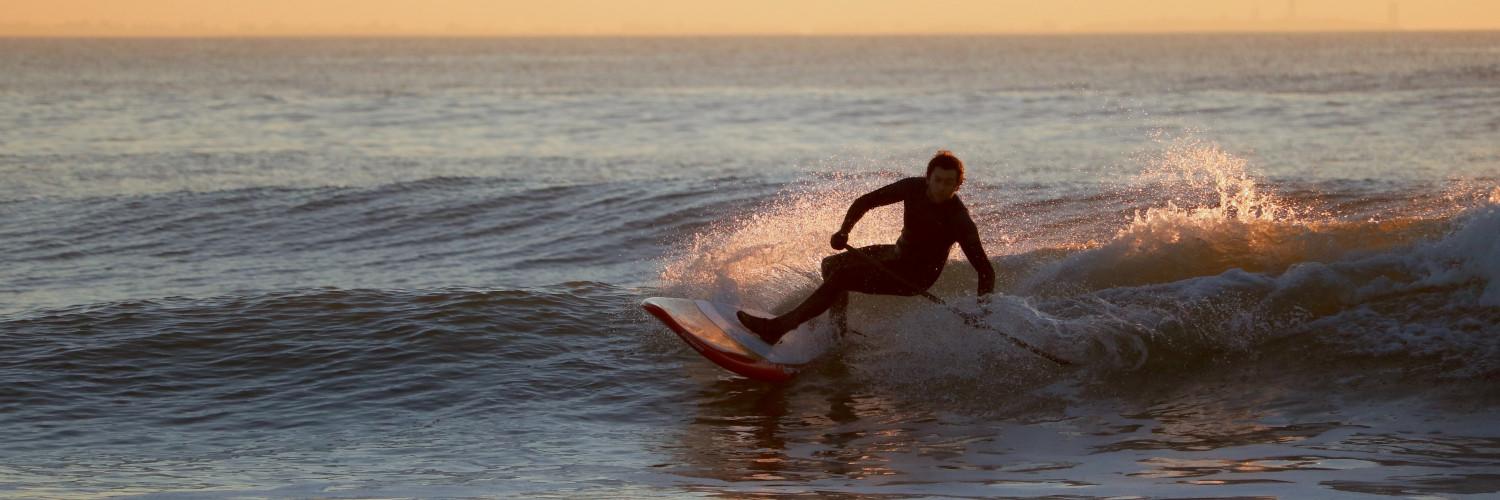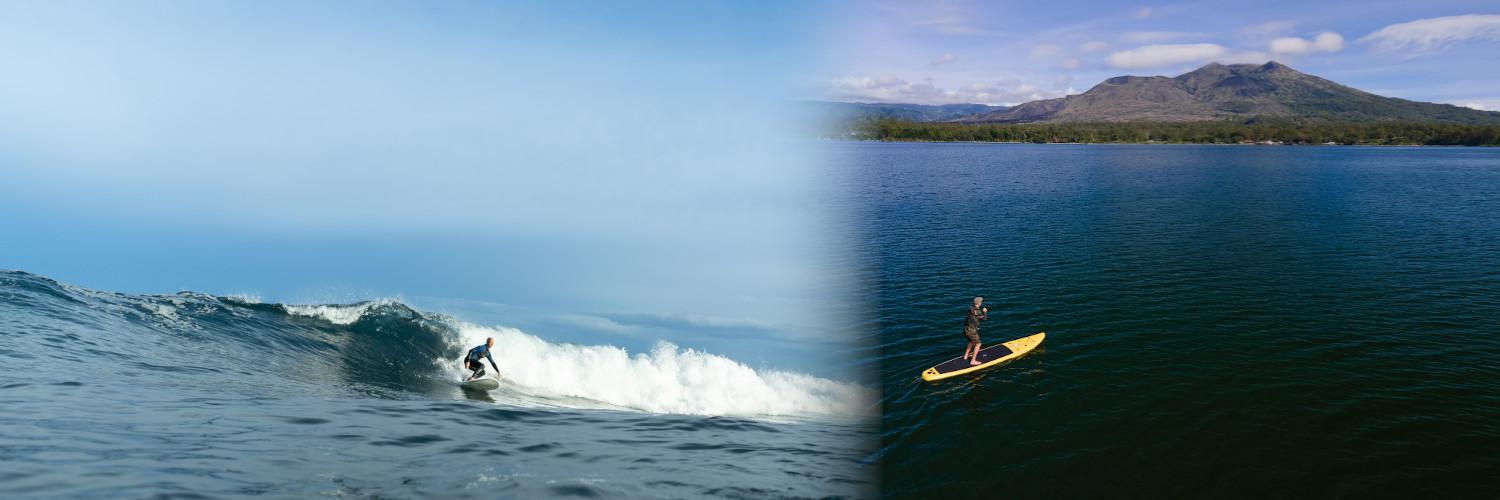In recent years, paddleboarding has experienced a surge in popularity, which has also led many to wonder if a surfboard can double as a paddleboard. While the two water sports share similarities, there are key differences in the design, size, and purpose of surfboards and paddleboards which may impact their interchangeability.
Surfboards, designed for riding waves, are generally smaller, with less volume and buoyancy than paddleboards. Paddleboards, on the other hand, are constructed for stability and floatability when paddling at low speeds in-between waves. As a result, paddleboards are typically thicker, wider, and longer than surfboards. Because of these differences, using a surfboard as a paddleboard can present challenges, especially for beginners in either sport.
With all that said, even tho it will not give the same experience as using a specialized paddleboard, you can use a paddle board as a surf board. Existing surfboard owners might give paddleboarding a try to test their skills and adaptability, but are generally advised to invest in a proper paddleboard for optimal enjoyment and ease in the sport.
Surfboard vs Paddleboard
Physical Differences
Surfboards and paddleboards differ in design and size. Paddleboards are generally wider, thicker, and longer than surfboards. This increased volume, due to a higher foam volume or air volume, provides more buoyancy, stability, and floatability when paddling at low speed. Surfboards, on the other hand, are sleeker and narrower, enabling more maneuverability and responsiveness.
Functional Differences
The functional differences between surfboards and paddleboards come down to their intended use. A board that is agile and responsive is required for surfing to catch and ride waves. Paddleboarding, or SUP (stand-up paddling), is intended for more straight-line paddling, often in calmer waters, making stability and balance a priority. With the rider using a paddle to propel themselves through the water, paddling forms an essential part of paddleboarding, while surfing focuses primarily on wave riding.
Why Paddleboard on a Surfboard?
Advantages
While making use of the existing equipment, paddleboarding on a surfboard allows surfers to experience a new challenge and have fun. They can improve their balance and maneuverability, essential surfing skills, by paddling while standing on a surfboard. A unique experience in catching and riding waves can be provided by the faster speed attained by paddleboarding.
Challenges
Despite the excitement, there are several obstacles when attempting to paddleboard on a surfboard. Surfboards are typically narrower and less stable compared to paddleboards, making it difficult for beginners to maintain balance while standing and paddling. Furthermore, due to their thinner tails and smaller fins, surfboards offer less stability, making it harder to maneuver on waves and maintain a straight line. As a result, paddleboarding on a surfboard can be more challenging and less efficient than using a dedicated paddleboard.
Paddleboarding Techniques on Surfboard
Positioning
When attempting to paddleboard on a surfboard, keep in mind that balance and flotation are crucial. Position yourself in the center of the surfboard, both lengthwise and widthwise, in order to maintain stability. Skilled riders who have already developed their balancing skills may find it easier to adapt to the different surface of a surfboard compared to a traditional paddleboard.
Paddling Techniques
Paddling techniques on a surfboard are similar to those used on a paddleboard. To generate power, utilize a wide grip on the paddle and make deep, smooth strokes. Focus on maintaining a steady rhythm, as an uneven pace might cause the surfboard to sway and throw off your balance. It is essential to master these paddling techniques for a successful experience and remember that the fins on a surfboard are not designed for stability.
Paddleboarding in Different Water Bodies
People can have fun paddleboarding on different water, like on the sea, lakes, and rivers. Paddleboarding on calm water, like lakes and quiet rivers, can be really nice and calming. There are no big waves and the water is steady, which is great for people who are new to paddleboarding or like a peaceful time on a paddle board.
On the other hand, oceans and some rivers with challenging rapids present a more dynamic paddleboarding experience. The presence of waves and currents in these water bodies require increased skill and balance from the paddleboarder. Varying wave conditions can test their abilities and techniques when ocean paddleboarding.
In general, where you paddleboard depends on how good you are and what kind of challenges you like. It could be a calm lake or the crazy waves in the sea, it is fun no matter where you do it.
Choosing the Right Board
Surfboard Types
Surfboards come in different shapes, sizes, and constructions. Traditional surfboards are made of foam and fiberglass, while some modern variations utilize materials like epoxy or carbon fiber. The choice of surfboard depends on the surfer’s skill level, height, weight, and personal preferences. Surfboard types include shortboards, longboards, fish, and hybrid boards - each designed for specific surf conditions and styles. Note that using a surfboard for paddleboarding might require more skill due to its lightweight and smaller structure compared to paddleboards.
Paddleboard Types
Paddleboards, also known as SUPs (stand-up paddleboards), are designed specifically for paddleboarding activities. More stability and easier balancing are provided by being wider and thicker than surfboards. Paddleboard types include inflatable paddleboards (iSUPs) and rigid foam or epoxy boards. iSUPs can be inflated and deflated for convenient storage and transport. On the other hand, rigid paddleboards offer better performance and durability but might be less portable. To enhance tracking and safety, it’s common for paddleboards to have fins and leash attachments. Consider the size, construction, and overall stability when choosing a paddleboard for surfing.
Conclusion
While it is possible to use a surfboard for paddleboarding, there are limitations to consider. The size, volume, and fins on a surfboard can make it difficult for beginners to balance and maintain a straight paddling trajectory. Surfboards are not designed for the stability and buoyancy required for efficient stand-up paddling.
On the other hand, there are paddleboards specifically designed for surfing, called SUP surfboards. Stable enough for paddleboarding, these boards make it easier to turn and control in waves.
It may not be the best choice, but you can use a surfboard for paddleboarding. People new to paddleboarding might do better with a board made just for the sport as it can give better stability, control, and more fun.
